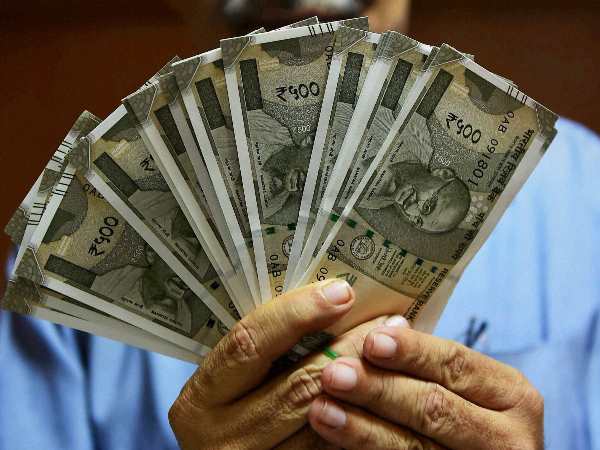9 Best Tax Saving Investment Options For Senior Citizens With Returns Up To 8.65%
Bank FDs and RDs, post office FDs and RDs, Senior Citizens' Savings Scheme (SCSS), National Pension System (NPS), etc are multiple curated investment options for senior citizens because all these have low-risk in nature and thus provide assured returns. In order to provide a senior citizen with regular income and wealth formation, a blend of these strategies can preferably be embraced. Retirement indicates the close of the income period and after this stage, what one wants is to make full use of the retirement corpus and mitigate tax burden. It is a concern for retirees to develop a portfolio with the proper blend of fixed income and market-linked assets. Let's glance at some hassle-free investment vehicles that can help to generate wealth and provide tax advantages to senior citizens.

National Pension System
NPS allows an eligibility limit of 18 and 65 for the subscribers, which ensures that senior citizens can invest in it as well. It can be carried all the way to the age of 70, once an NPS account is opened by them. Contribution in NPS is liable under Section 80C for tax deductions up to Rs 1.5 lakh and under Section 80CCD(1B) up to an additional Rs 50,000. As per the preference of the investor, capital invested in equity and debt funds under NPS can generate good returns. 60 per cent of the NPS corpus is tax-free upon maturity. 40 per cent of the NPS corpus will be used for the purchase of an annuity.

National Saving Certificate
The amount of deposit you can render in NSCs is not limited. But, under section 80C of the Income Tax Act, you can only claim a deduction for investments up to Rs 1.5 lakh in a fiscal year. The rate of interest is evaluated and subject to adjust by the government every quarter. Whereas the interest received by the National Saving Certificate is taxable, the amount of the interest is considered to have been reinvested, and it is not paid directly to the investor until maturity. The interest element, thus, being reinvested, also counts as a deduction under Section 80C.

Senior Citizens Savings Scheme
At any given point in time, a limit of Rs 15 lakh is permitted as an investment. Under section 80C, a senior citizen can seek a deduction for contributions up to Rs 1.5 lakh in a fiscal year. For those who are over the age of 60, the Senior Citizens' Savings Scheme (SCSS) is a tax-saving alternative. That being said, if the individual has chosen for voluntary retirement, at the age of 58, they can start investing in the scheme. Whereas for retired defence employees, the minimum age cap for investing in SCSS is now set at 50 years. SCSS comes with a lock-in duration of 5 years and further can be extended to a block of 3 years. Under these regulations, no partial withdrawal is allowed until the maturity date of a term of five years from the date of the account opening. That being said, in the context of any crisis, an investor can close the account prematurely by paying a penalty.

Public Provident Fund
As it is a government-backed scheme, the PPF is deemed a stable investment method. Investment, interest and maturity proceeds are currently completely tax-deductible. This renders the PPF an EEE vehicle for tax benefits. Investors can open a PPF account in a post office or any designated branch of a public sector bank. There are also few private banks that provide the option, through an online channel, to invest in PPF. The rate of interest is assessed and subject to adjust by the government every quarter. Under section 80C of the Income Tax Act, you can invest and claim a deduction for investments up to Rs 1.5 lakh in one fiscal year. The Rs 1.5 lakh deposit can be made in any number of instalments according to the overall investment cap.

Sukanya Samriddhi Account
You can open a Sukanya Samriddhi Yojana account on behalf of your daughter if she is below the age of 10 years. The interest rate is related to the government bond yield in this scheme. As per the government's discretion, the interest rate of the scheme is also subject to change every quarter. With a minimum amount of Rs 250, deposit up to Rs 1.5 lakh in a fiscal year can be made per account. Only in a financial year under section 80C of the Income Tax Act, you can claim a deduction of up to Rs 1.5 lakh for investments in this scheme.

Voluntary Provident Fund
VPF enables employees to contribute freely to their PF over and above the required EPF contribution. That being said, as is required under the EPF, the employer is not required to make an equivalent contribution to the VPF. Related lock-in provisions as EPF, i.e. up to retirement or resignation, whichever is earlier, are also liable to VPF. Under section 80C, VPF is a perfect investment option for tax savings as it provides a tax-free return. In addition, because they are assured by the government, the returns are risk-free. Yields are currently beating inflation, which, especially for conservative buyers, makes the fund appealing. VPF gives you the double advantage of being a mechanism for tax saving and retirement income, and salaried employees can consider VPF for tax benefits.
Up to 100% of the basic salary and DA (dearness allowance) can be contributed by a salaried employee. However, under section 80C of the Income Tax Act, you can only claim a deduction for contributions up to Rs 1.5 lakh in a fiscal year. Consequently, if you have already exceeded the 80C cap from other investments or expenses, such as EPF, tuition fees for children, etc., then you may not be able to save any additional tax by using the additional VPF contribution. Hence, it implies that you can only reap tax benefits under VPF if the maximum cap is not surpassed by other means.

Tax-saving FDs
When it comes to tax benefits fixed deposits are deemed better relative to equity investments, in terms of capital stability and assured returns. For tax savers, the scheme is an easy and convenient choice. Banks determine the interest rates on their tax-saving FDs, and they are adjusted periodically. The maximum amount that can be invested in these tax savings deposits is Rs 1.5 lakh, as per the websites of the State Bank of India, ICICI Bank and HDFC Bank, for which you can receive an exemption under section 80C in the fiscal year. The fixed deposits with tax-saving benefits include a lock-in term of 5 years.

Top 10 Tax Saving FDs With Higher Interest Rates
| Banks/Tax Saving Schemes | ROI for senior citizens |
|---|---|
| Jana Small Finance Bank Tax Saver FD | 8.00% |
| RBL Bank Tax Saving FDs | 7.45% |
| AU Small Finance Bank 5-Year Tax Saving FD | 7.25% |
| Ujjivan Small Finance Bank Tax Saver FD | 7.00% |
| Fincare Small Finance Bank Tax Saver FD | 7.00% |
| Bajaj Finance Tax Saving FD | 6.85% |
| ICICI Bank Tax Saving FD | 6.30% |
| HDFC Bank 5-Year Tax Saving FD | 6.25% |
| SBI Tax Savings Scheme | 6.20% |
| Corporation Bank Tax Saver Plus Deposit Scheme | 6.10% |

Post Office Time Deposit
Post Office Time Deposit runs with an additional layer of security, much like bank FDs and RDs. There is no chance of default as the schemes are backed by the government. Unlike bank FDs/RDs, post office deposits are also free from the TDS deduction. Deposits in post office FDs (5-year tenure) are tax-free up to Rs 1.5 lakh, but interest is taxable on them. One can start an investment with a minimum deposit of Rs. 1000/- and in multiple of 100 with no upper limit. A post office TD account can be opened individually, jointly (up to 3 adults), on behalf of a minor and on behalf of a person of unsound mind. This scheme comes with multiple tenure options i.e. 1 year, 2 years, 3 years, 5 years.


Bank FDs and RDs
On bank fixed deposits and recurring deposits, senior citizens get better interest rates than regular customers, usually 0.5 per cent higher than usual rates. Interest income of up to Rs 50,000 per annum is tax-free for senior citizens, as per Section 80 TTB of the Income Tax Act 1961. Under Section 80 TTA of the Income Tax Act, 1961, and also only from savings accounts, general public only receive tax-free interest of up to Rs 10,000 a year opposed to the income earned by senior citizens. Deposits in bank FDs are tax-deductible up to Rs 1.5 lakh (5-year tenure) but interest income on the same is subject to taxation.

Interest Rates Of The Above Discussed Tax Saving Investments
| Schemes | ROI |
|---|---|
| Post Office Time Deposit | 6.70% |
| National Saving Certificate | 6.80% |
| Public Provident Fund | 7.10% |
| Senior Citizens Savings Scheme | 7.40% |
| Sukanya Samriddhi Account | 7.60% |
| Voluntary Provident Fund | 8.65% |






























